Abstract
Drug versus placebo effects were contrasted with those of contingency management in the treatment of a hyperactive child. Several criterion behaviors were monitored in two different settings to gauge the breadth and generalizability of drug and behavior-management effects. Medication and contingency management effects were both found to be situation specific. No interaction effects were found. Accuracy of task performance, amount of eye contact with the experimenters, frequency of repetitive hand movements, and distractible behavior were apparently unaffected by medication (Ritalin versus placebo) within the clinic. A multiple-baseline design incorporating contingency reversals revealed the reinforcement contingencies to be the crucial variable controlling behavior within the clinic. Medication effects were shown to be significant within the home setting where reinforcement contingencies were not changed. While aggressive behavior decreased as a function of Ritalin, repetitive hand movements increased.
Full text
PDF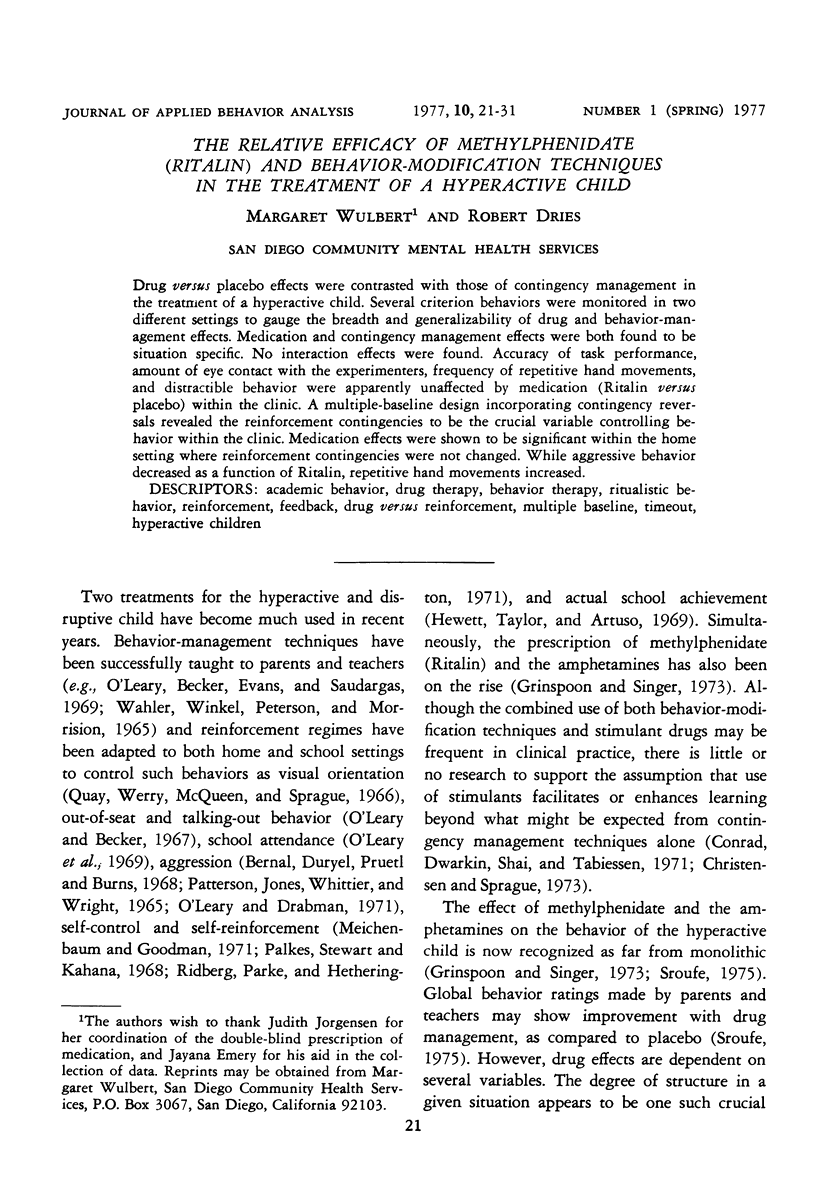

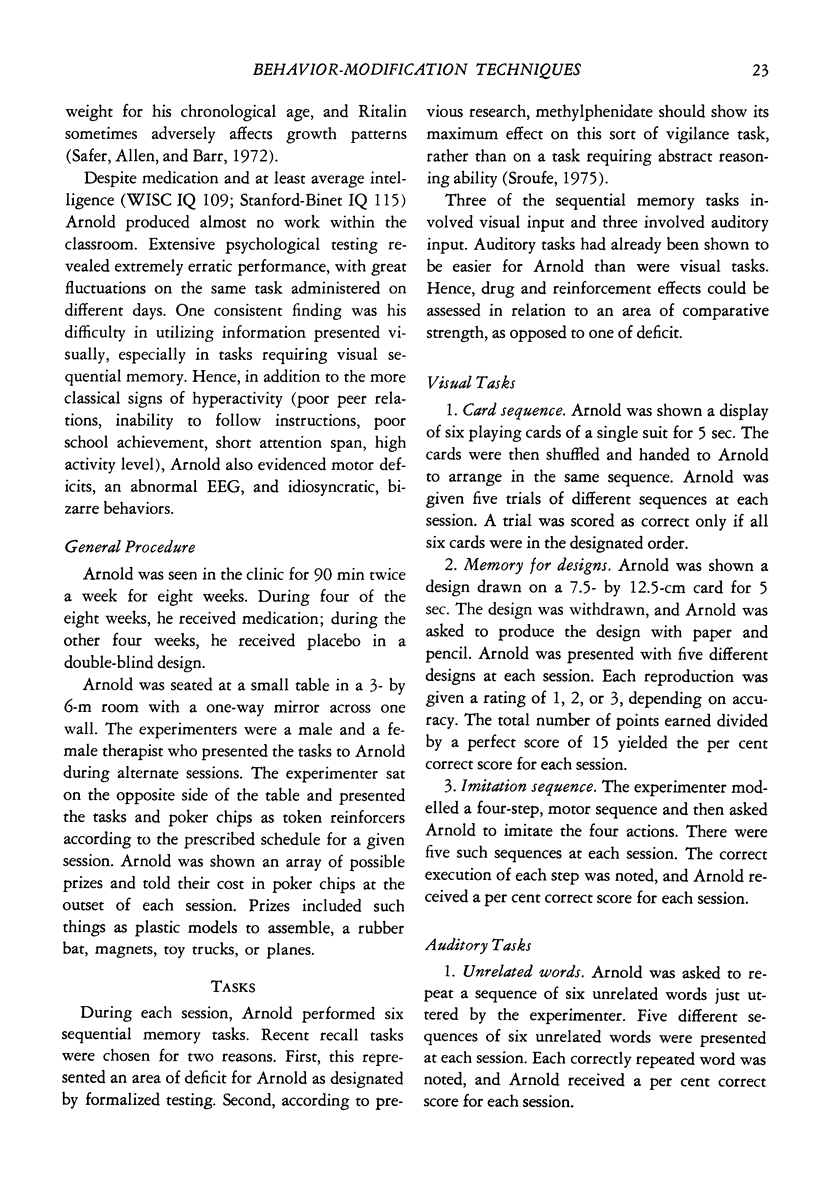

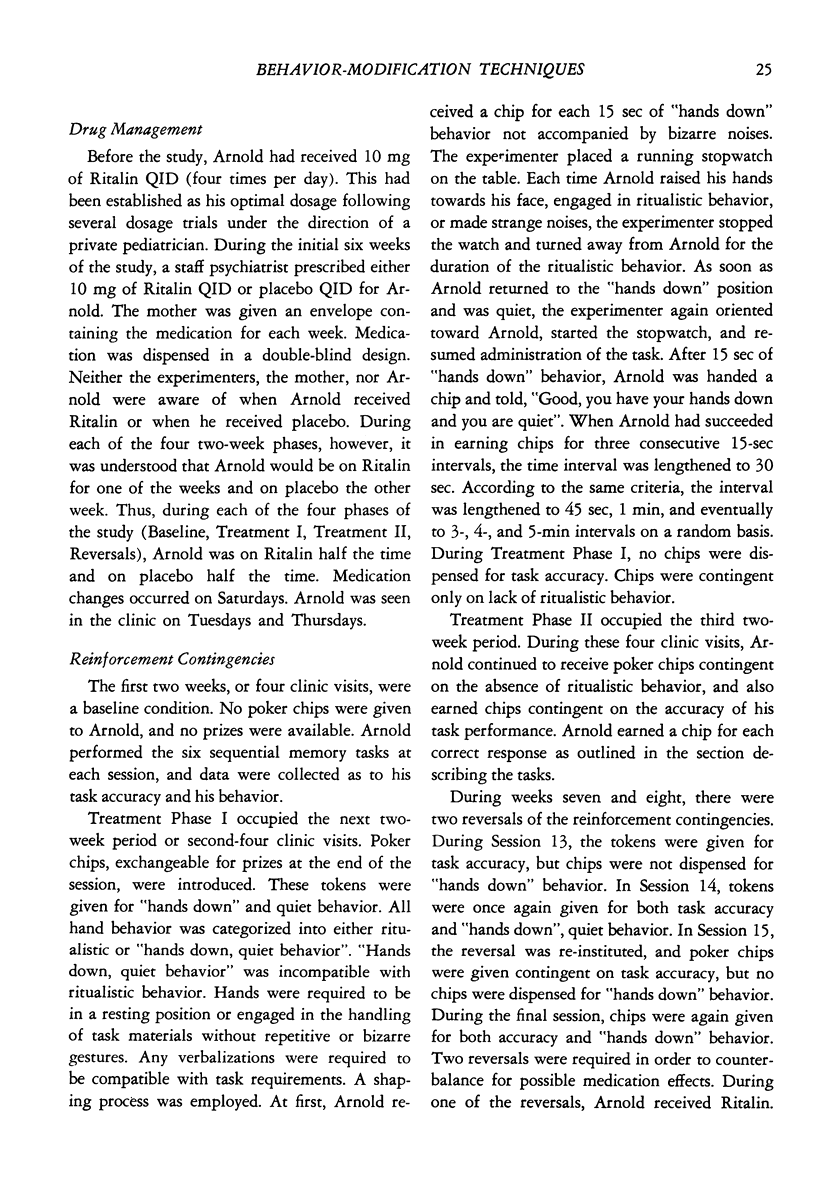
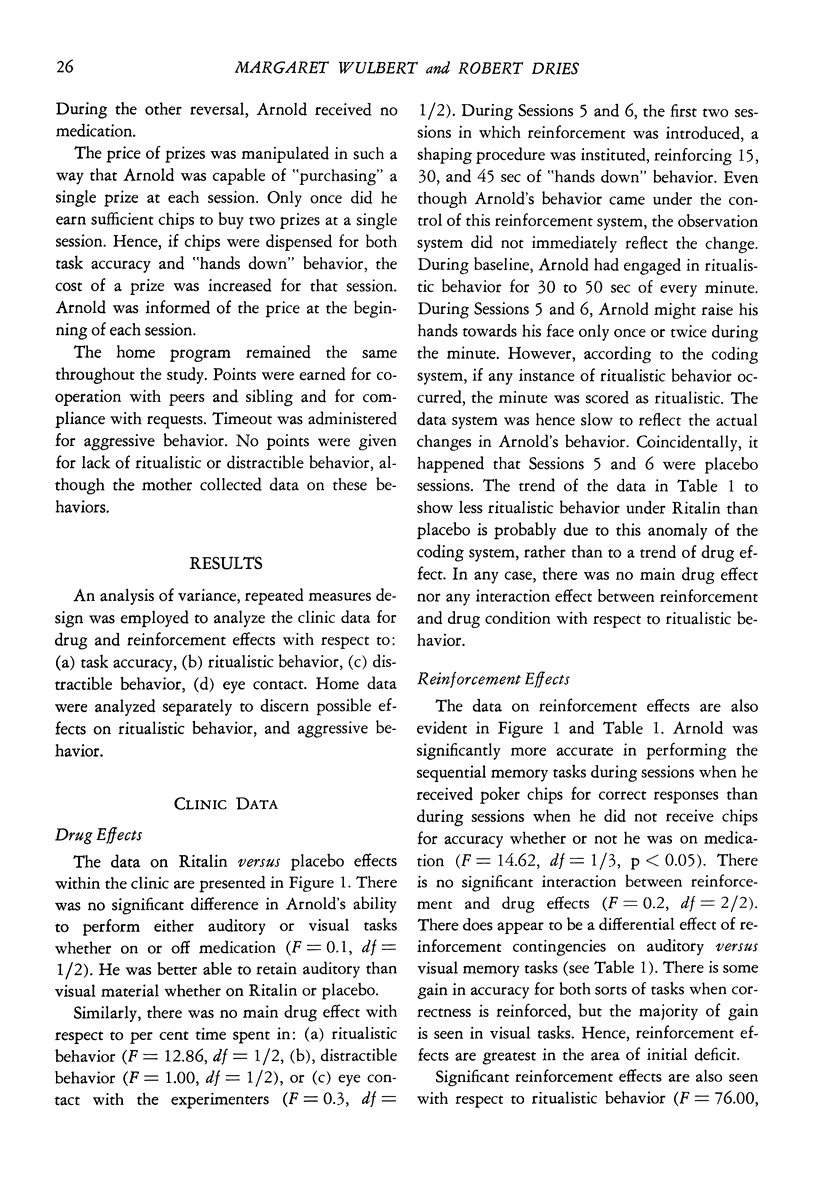


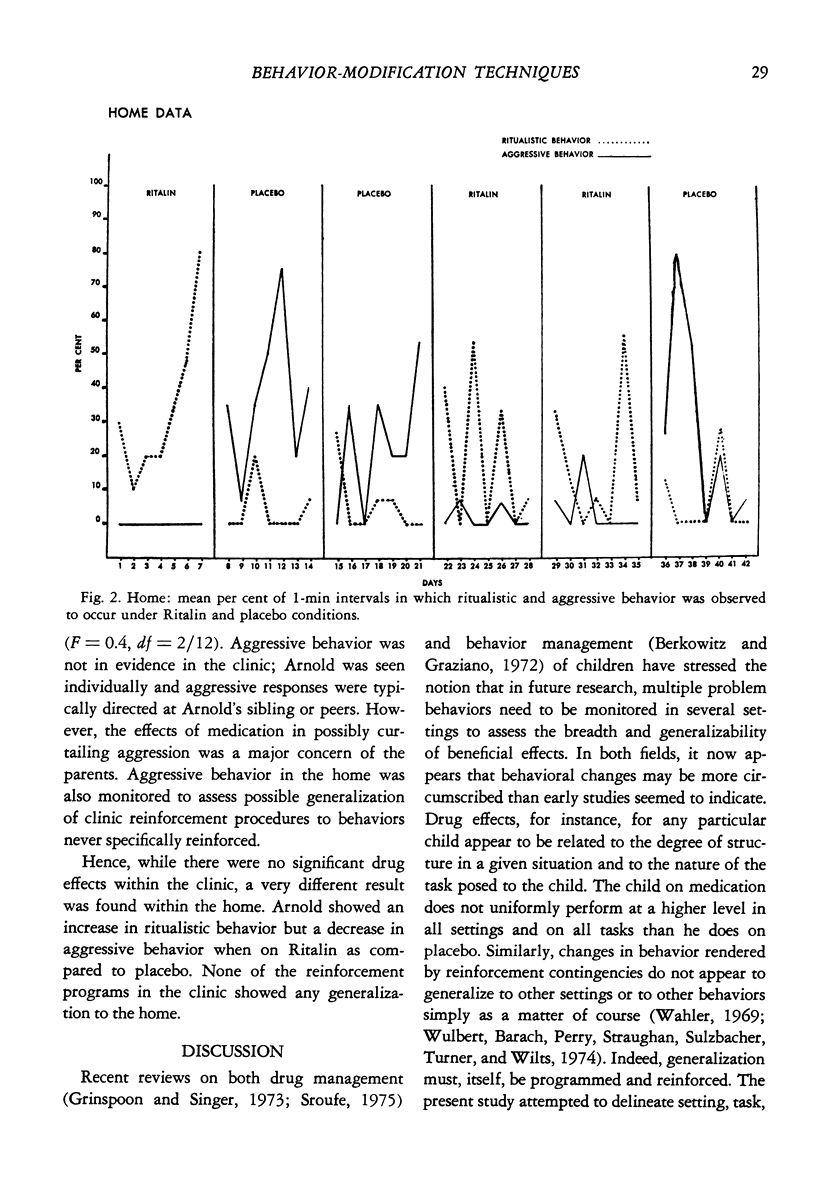

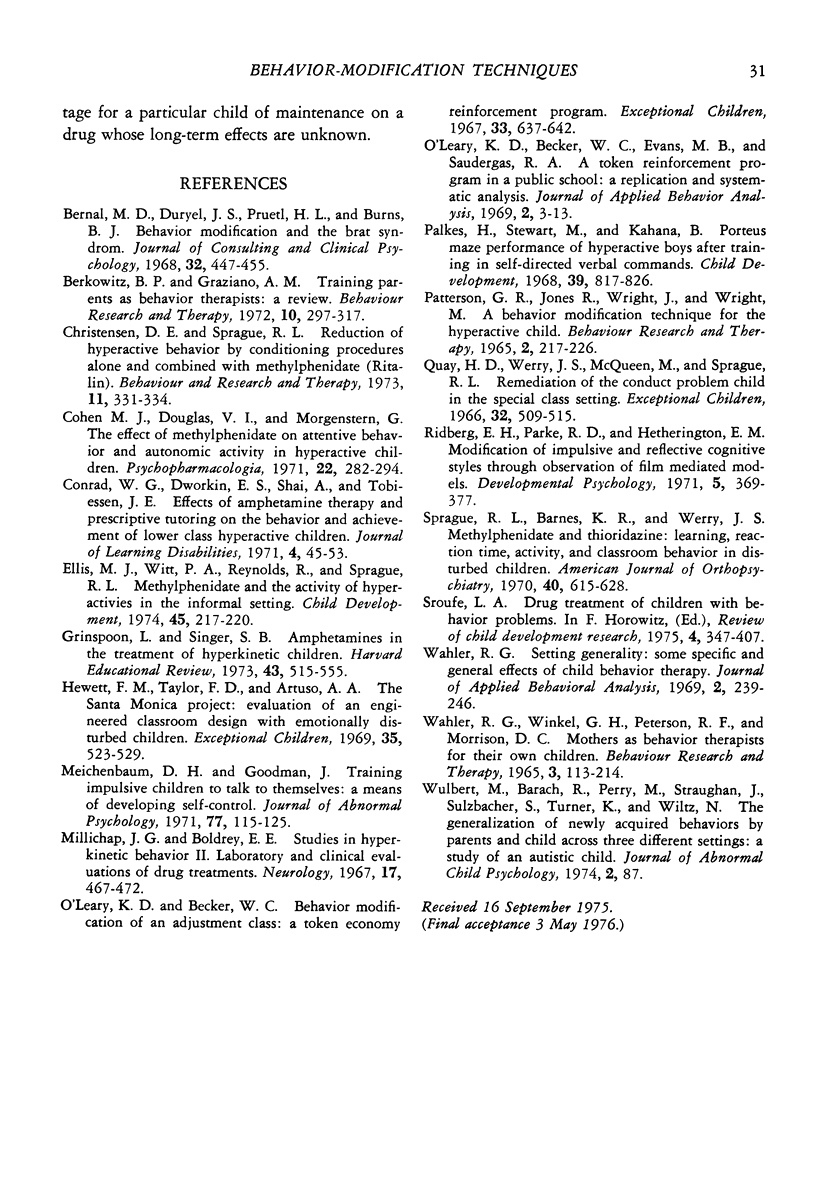
Selected References
These references are in PubMed. This may not be the complete list of references from this article.
- Berkowitz B. P., Graziano A. M. Training parents as behavior therapists: a review. Behav Res Ther. 1972 Nov;10(4):297–317. doi: 10.1016/0005-7967(72)90054-x. [DOI] [PubMed] [Google Scholar]
- Bernal M. E., Duryee J. S., Pruett H. L., Burns B. J. Behavior modification and the brat syndrome. J Consult Clin Psychol. 1968 Aug;32(4):447–455. doi: 10.1037/h0026109. [DOI] [PubMed] [Google Scholar]
- Christensen D. E., Sprague R. L. Reduction of hyperactive behavior by conditioning procedures alone and combined with methylphenidate (Ritalin). Behav Res Ther. 1973 Aug;11(3):331–334. doi: 10.1016/0005-7967(73)90012-0. [DOI] [PubMed] [Google Scholar]
- Cohen N. J., Douglas V. I., Morgenstern G. The effect of methylphenidate on attentive behavior and autonomic activity in hyperactive children. Psychopharmacologia. 1971;22(3):282–294. doi: 10.1007/BF00401790. [DOI] [PubMed] [Google Scholar]
- Ellis M. J., Witt P. A., Reynolds R., Sprague R. L. Methylphenidate and the activity of hyperactives in the informal setting. Child Dev. 1974 Mar;45(1):217–220. [PubMed] [Google Scholar]
- Hewett F. M., Taylor F. D., Artuso A. A. The Santa Monico project: evaluation of an engineered classroom design with emotionally disturbed children. Except Child. 1969 Mar;35(7):523–529. [PubMed] [Google Scholar]
- Meichenbaum D. H., Goodman J. Training impulsive children to talk to themselves: a means of developing self-control. J Abnorm Psychol. 1971 Apr;77(2):115–126. doi: 10.1037/h0030773. [DOI] [PubMed] [Google Scholar]
- Millichap J. G., Boldrey E. E. Studies in hyperkinetic behavior. II. Laboratory and clinical evaluations of drug treatments. Neurology. 1967 May;17(5):467–471. doi: 10.1212/wnl.17.5.467. [DOI] [PubMed] [Google Scholar]
- O'Leary K. D., Becker W. C. Behavior modification of an adjustment class: a token reinforcement program. Except Child. 1967 May;33(9):637–642. [PubMed] [Google Scholar]
- O'leary K. D., Becker W. C., Evans M. B., Saudargas R. A. A token reinforcement program in a public school: a replication and systematic analysis. J Appl Behav Anal. 1969 Spring;2(1):3–13. doi: 10.1901/jaba.1969.2-3. [DOI] [PMC free article] [PubMed] [Google Scholar]
- PATTERSON G. R., JONES R., WHITTIER J., WRIGHT M. A. A BEHAVIOUR MODIFICATION TECHNIQUE FOR THE HYPERACTIVE CHILD. Behav Res Ther. 1964;2(2-4):217–226. doi: 10.1016/0005-7967(64)90019-1. [DOI] [PubMed] [Google Scholar]
- Palkes H., Stewart M., Kahana B. Porteus maze performance of hyperactive boys after training in self-directed verbal commands. Child Dev. 1968 Sep;39(3):817–826. [PubMed] [Google Scholar]
- Quay H. C., Werry J. S., McQueen M., Sprague R. L. Remediation of the conduct problem child in the special class setting. Except Child. 1966 Apr;32(8):509–515. doi: 10.1177/001440296603200801. [DOI] [PubMed] [Google Scholar]
- Sprague R. L., Barnes K. R., Werry J. S. Methylphenidate and thioridazine: learning, reaction time, activity, and classroom behavior in disturbed children. Am J Orthopsychiatry. 1970 Jul;40(4):615–628. doi: 10.1111/j.1939-0025.1970.tb00719.x. [DOI] [PubMed] [Google Scholar]
- Wahler R. G. Setting generality: some specific and general effects of child behavior therapy. J Appl Behav Anal. 1969 Winter;2(4):239–246. doi: 10.1901/jaba.1969.2-239. [DOI] [PMC free article] [PubMed] [Google Scholar]
- Wahler R. G., Winkel G. H., Peterson R. F., Morrison D. C. Mothers as behavior therapists for their own children. Behav Res Ther. 1965 Sep;3(2):113–124. doi: 10.1016/0005-7967(65)90015-x. [DOI] [PubMed] [Google Scholar]
- Wulbert M., Barach R., Perry M., Straughan J., Sulzbacher S., Turner K., Wiltz N. The generalization of newly acquired behaviors by parents and child across three different settings. A study of an autistic child. J Abnorm Child Psychol. 1974 Jun;2(2):87–98. doi: 10.1007/BF00919092. [DOI] [PubMed] [Google Scholar]


